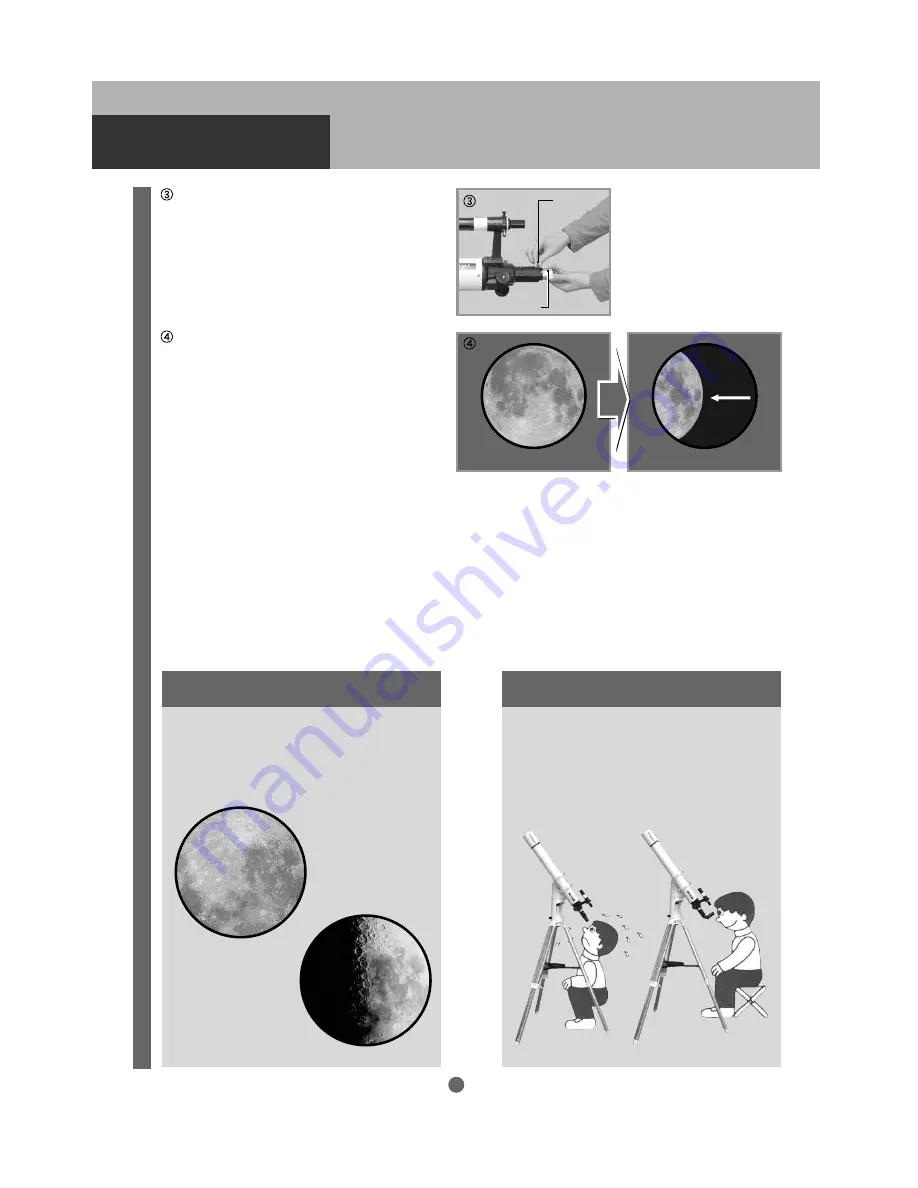
30
Try using different eyepieces to change the
magnification depending on what type of
lunar features you wish to view.
The Moon (as well as stars and other celestial
objects) will move out of the field of view while
looking through the telescope. This is due
to the Ear th’s rotation. The higher the
magnification, the faster the movement.
Re-center the Moon in the field of view by
using the direction keys.
Apply the above same procedure when
pointing the telescope at the planets, such
as Jupiter and Saturn or nebulae and star
clusters.
To learn about positions of these celestial
objects (when and where they can be found),
please refer to commercially available
astronomy magazines.
Eyepiece
Setscrew
Eyepiece
Hint 8
The full moon is not suitable for observing
lunar creators in detail because of the lack
of shadows and the overwhelming bright-
ness.
When you view celestial objects around the
zenith (straight up in the sky), it is much
comfortable to use a right angled diagonal
or a flip mirror as shown in the figure to
look through the eyepiece. But the images
are mirror reversed.
Hint 9
Full moon or nearly full moon
Half moon
Straight-thru viewing
Right-angled viewing
OBSERVING CELESTIAL
OBJECTS
Telescope’s field of view at high power
Drift out of the file of view
Содержание Skypod
Страница 1: ...Altazimuth Mount Instruction Manual for...






























